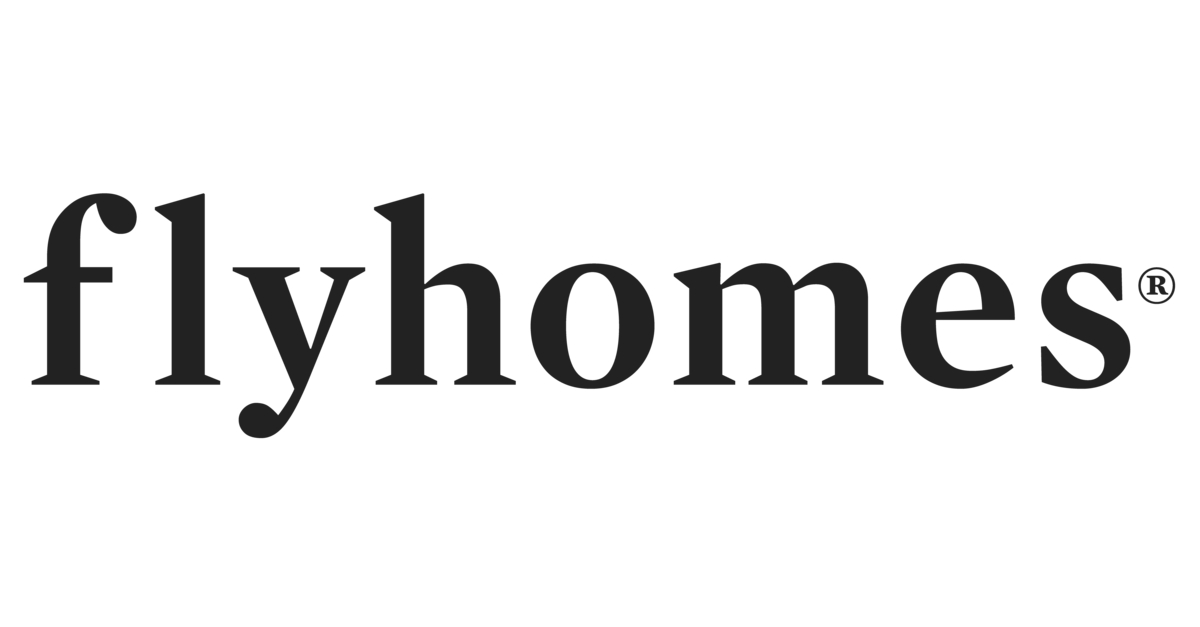- TECHSWU
- Posts
- TECHSWU #52
TECHSWU #52
Welcome to TECHSWU, your go-to destination for all things tech that matter in your daily life!



SiouxFalls.Business Report has announced that two new attractions are coming to Sioux Falls: waterless slides and a high-tech basketball training experience. Here are the highlights:
• The waterless slides will be a unique addition to the city's entertainment options, providing a fun and exhilarating experience for children and adults alike.
• The high-tech basketball training experience will use advanced technology to improve players' skills and performance on the court.
• These new attractions are expected to draw both locals and tourists, boosting the local economy and providing more entertainment options for residents.
• The announcement of these additions demonstrates the city's commitment to innovation and providing unique experiences for its residents and visitors.
• The SiouxFalls.Business Report continues to cover the latest business news and developments in the Sioux Falls area, keeping residents informed about what's happening in their community.

Apple recently introduced Apple Intelligence, a personal intelligence system that offers groundbreaking AI features for iPhones, iPads, and Macs. Here are some highlights of how Apple Intelligence can make your life easier:
• Siri has been upgraded to be a more intuitive virtual assistant, capable of understanding deeper meanings and providing more accurate responses.
• ChatGPT, a chatbot powered by GPT-4, is now integrated into Siri, allowing users to access it for free and ask questions, share photos, and get suggestions.
• Users can ask Apple Intelligence to search for specific documents, play recommended podcasts, and find photos with specific people in them.
• The auto-fill feature allows Siri to find personal documents, like driver's licenses, from photos and automatically fill in online forms.
• Siri can understand natural language commands to find specific images, enhance image colors, and summarize documents, and the results can be easily shared with others.
• Apple Intelligence offers superior text editing tools that allow users to generate new text, proofread and edit, and even change tone across various platforms and apps.
• The Image Playground feature lets users create customized images in seconds by describing the image, choosing a person from their library, and selecting a style.
• The Clean Up tool helps users identify and remove distracting objects in the background of photos.
• Siri can provide instructions on how to use specific features, even if the user doesn't remember the name.
• Apple now allows users to generate their own emojis, called Genmojis, that look just like themselves or their friends.
These features, along with many others, will be available to users in the latter half of the year.

Apple has announced visionOS 2, an update to its Apple Vision Pro spatial computing headset that supports both augmented reality (AR) and virtual reality (VR). The update includes several new features and enhancements aimed at improving the overall spatial computing experience. Some highlights of visionOS 2 include:
• The ability to create spatial photos, transforming 2D images into immersive experiences
• New intuitive hand gestures that provide quick access to frequently used features
• Enhanced productivity tools, such as a larger Mac Virtual Display and mouse support
• New APIs and frameworks for developers to create volumetric and shareable apps
• Integration with HealthKit for innovative health and fitness experiences
• Apple Immersive Video, offering 3D 8K video with a 180-degree field of view and Spatial Audio.
The developer preview of visionOS 2 is now available to Apple Developer Program members, and more information can be found on the Apple website. Other features of visionOS 2 include Safari allowing users to watch videos in an Environment, multiview support on the Apple TV app, and systemwide Live Captions.


Indian smart wearables brand Noise has added stress-tracking features to its Luna Ring wearable device to help users manage stress and improve overall well-being. The Luna Ring employs advanced algorithms and insights into the autonomic nervous system to provide real-time evaluations of stress levels and recovery processes. It offers users insights into low, medium, and high-stress periods throughout the day, tracks stress outside of sleep and workouts, and analyzes correlations between daily activities and physiological stress levels to identify potential stress triggers. In addition to stress tracking, the Luna Ring also offers sleep tracking, readiness monitoring, and activity tracking features. The device is available in seven sizes and five colors.
Highlights from the article:
• Noise introduces stress-tracking features in its Luna Ring smart wearable
• Advanced Stress Tracking Algorithms
• Educating Users on Stress Responses
• Luna Ring: Availability

Light, the company behind the minimalist Light Phone with an e-paper screen, has announced its newest model, the Light Phone III. The phone features a larger OLED display, an NFC chip for future payment tools, and a camera. It maintains its simplicity by not offering access to social media, the internet, or email. The Light Phone III aims to improve usability and performance, with a larger form factor that is easier to hold and text on. The phone also appeals to privacy-minded users, as Light pays privately for features like directions and navigation to avoid data tracking. The Light Phone III is priced at $799, compared to the $299 Light Phone II. Preorders are available at a 50% discount, with shipping expected to begin in January 2025.


In this article, Will Rinehart discusses the economics of artificial intelligence (AI) and the potential impact of robots on the workforce. Rinehart responds to a plea for more economists to be involved in discussions about the implications of AI by laying out some key findings that economists have made about companies adopting new technologies. Here are some highlights:
• Adoption of new technology can augment labor and capital differently by automating certain tasks or enhancing the productivity of tasks.
• Disruptive technologies like the tractor and electricity took decades to be widely adopted.
• Studies have shown that the adoption of robots in manufacturing firms can lead to substantial output gains, reduced labor costs, and net job creation.
• Automation technologies have a variety of effects on the workforce, with cases where skilled workers benefit and the labor market expands.
• Compensation mechanisms, such as the Baumol effect and increased demand for service jobs, can offset the labor-displacing effect of technology.
Overall, Rinehart argues that while AI and automation may have significant effects on the workforce, there are also compensating mechanisms that can create or reinstate labor.

Apple introduced its vision for integrating artificial intelligence (AI) into its product lineup at the Worldwide Developer Conference. The key feature is Apple Intelligence, a suite of AI capabilities that aims to deliver personalized services while ensuring data privacy. Here's how it works:
• Apple's system will attempt to perform AI tasks locally on the device itself to avoid using cloud services.
• If data needs to be exchanged with the cloud, it will be encrypted and deleted afterward. The process, called Private Cloud Compute, will also undergo verification by independent security researchers.
• The company claims that any personal data passed to the cloud will only be used for the specific AI task and will not be accessible to Apple or retained by the company.
• Apple showcased examples of how this technology will work in future versions of iOS, including asking Siri to find and play specific content or using the iPhone to find information and predict traffic for events.
• Apple's new privacy-focused system is positioned as a contrast to other companies that collect and store vast amounts of personal data.
• Despite Apple's privacy measures, concerns remain about vulnerabilities and how the company will respond to independent researchers' findings.
• The beta versions of Apple Intelligence will be released on the iPhone 15 and the new macOS Sequoia.
Overall, Apple aims to provide AI capabilities to users while prioritizing data privacy and security.

Tesla has restarted its hiring efforts beyond AI and robotics, signaling an end to the previous hiring freeze caused by waves of layoffs in the company. CEO Elon Musk fired an estimated 15-20% of Tesla's staff earlier this quarter, resulting in a reduction of Tesla's "deep bench strength." The layoffs affected various departments, including service, sales, and delivery, which caused morale to plummet and an increase in workload for remaining employees. However, Tesla has now posted hundreds of new positions across several departments, mainly focusing on service and sales. The automaker is also hiring for positions at its lithium refinery in Texas. It is expected that some of the employees who were previously let go may be rehired. Overall, this signals a shift in Tesla's hiring strategy, as it expands beyond AI and robotics.


This article discusses how GIS (geographic information systems) technology is enabling the development of energy-efficient smart cities. Some key takeaways include:
• Geography has always played a role in the success of cities, and now GIS technology is shaping urban design and engineering in a more profound way than physical geography did in the past.
• Urbanization is expanding rapidly, and GIS is crucial in supporting the complex environmental, infrastructure, and services delivery challenges that come with it.
• GIS allows for the visualization, analysis, management, and sharing of spatial data, helping stakeholders understand the needs of a city and make informed decisions.
• GIS technology is making an impact in smart cities by enabling energy conservation, optimizing renewable energy usage, and enhancing the efficiency of public utilities.
• Real-world case studies, such as the City of Markranstädt in Germany and Singapore's Smart Nation initiative, demonstrate the practical applications of GIS in creating sustainable and energy-efficient urban environments.
• As GIS technology continues to advance, the potential for smarter and greener cities becomes more achievable.

Olympic athletes are using continuous glucose monitors (CGMs), originally designed for diabetes management, to optimize their performance and increase their chances of winning medals. CGMs provide minute-by-minute insights on blood glucose levels, allowing athletes to track calorie intake and fine-tune workout intensity. Some athletes have found that CGMs help them address issues such as extreme exhaustion during training sessions and overtraining. However, there is an ongoing debate about the fairness of using CGMs in sports, and cycling's governing body has already banned their non-medical use during races. While the benefits of CGMs for athletes without diabetes are largely anecdotal, companies like Levels, Nutrisense, and Signos offer apps and programs that can be used in conjunction with CGMs made by Dexcom or Abbott. Abbott has also launched the CGM Libre Sense Glucose Sport Biosensor for athletes without diabetes in several European countries.


Flyhomes, a real estate company, has launched the world's first AI-powered home search portal after acquiring the assets of real estate AI startup, ZeroDown. The new portal, called Flyhomes AI, offers a conversational real estate search and research experience, providing home shoppers with expanded access to information. The technology integration was overseen by the co-founders of ZeroDown, who joined Flyhomes as CTO and CGO. The portal covers 75% of the US population and utilizes AI to answer nuanced questions about homes, such as whether a property is a good deal compared to others in the neighborhood. The goal is to provide consumers with deep insights and a more personalized experience. The launch of Flyhomes AI comes just as a new rule, requiring buyers to compensate agents directly before touring homes, is set to take effect. Flyhomes believes its technology will help address the challenges created by this new rule and position it as a leader in the real estate market.

The rise of artificial intelligence (AI) is revolutionizing various sectors, from finance to manufacturing. While AI has proven to be a valuable tool in the office environment, the real conflicts arise when AI meets the physical world, particularly in manufacturing and logistics. Robots equipped with AI are becoming more common on factory and warehouse floors, and their capabilities are advancing rapidly. However, as these robots become more prevalent in the service economy and move beyond factory confines, there is a need to establish rules and boundaries to ensure their safe interaction with humans. Some key points from the article include:
• The current AI applications on mobile robots are relatively simple, but they are expected to become more complex over time.
• General-purpose robots that can carry out specific tasks given verbal commands are being developed.
• It is crucial to address safety concerns and establish rules to handle artificially intelligent machines.
• The US needs to invest in the development and mass production of humanoid robots to compete with other countries.
• A human should always be responsible for the actions of a robot, especially as they become more developed and interact with the public.
Overall, while AI has the potential to benefit mankind, it is essential to set boundaries and ensure that humans have the final say in the actions of robots.

HealthyPi Move is an open-source biometric monitor designed in the form of a watch. It supports continuous or intermittent monitoring of various vital biometric signals such as ECG, heart rate, HRV, PPG, SpO₂, blood-pressure trends, and respiration. The device is designed for both personal health tracking and advanced research applications. Here are some key features:
• Open-source biometric monitor in a watch form factor
• Continuous or intermittent monitoring of various biometric signals
• Designed for personal health tracking and advanced research applications
• Open hardware and software for customization and innovation
• Data ownership and privacy with no cloud dependency or subscriptions
• Multiple sensors for comprehensive health monitoring
• Powered by Nordic nRF5340 dual-core SoC
• Firmware based on Zephyr RTOS and nRF Connect SDK
The HealthyPi Move operates independently without relying on cloud services and allows users to integrate health tracking into their projects and routines. It ensures data privacy and user control, as it does not collect or sell user data. The device is available for purchase on the Crowd Supply website for $249 and offers replacement parts for maintainability and upgradability. Overall, it is a groundbreaking device that combines open-source technology and advanced biometric monitoring.

A new video from AI robotics company Figure showcases its humanoid robot, Figure 01, which has been infused with OpenAI's artificial intelligence. The robot has the ability to "visual reasoning and language understanding," allowing it to see objects and communicate with humans nearby. The demo video shows Figure 01 performing tasks such as putting away dishes, cleaning up trash, and handing an apple to a human when requested. The robot's responses are impressively human-like, with a slight delay between prompts and responses and even filler noises such as "uh" and "um." The developers claim that Figure 01 operates solely on its own programming and uses "end-to-end neural networks" to process images and text for language responses. This technology appears to be similar to what Boston Dynamics utilized in 2023 to make their robot dog, Spot, speak and respond to prompts. The video provides a glimpse into the future of humanoid robots, which may soon be assisting with household tasks.

